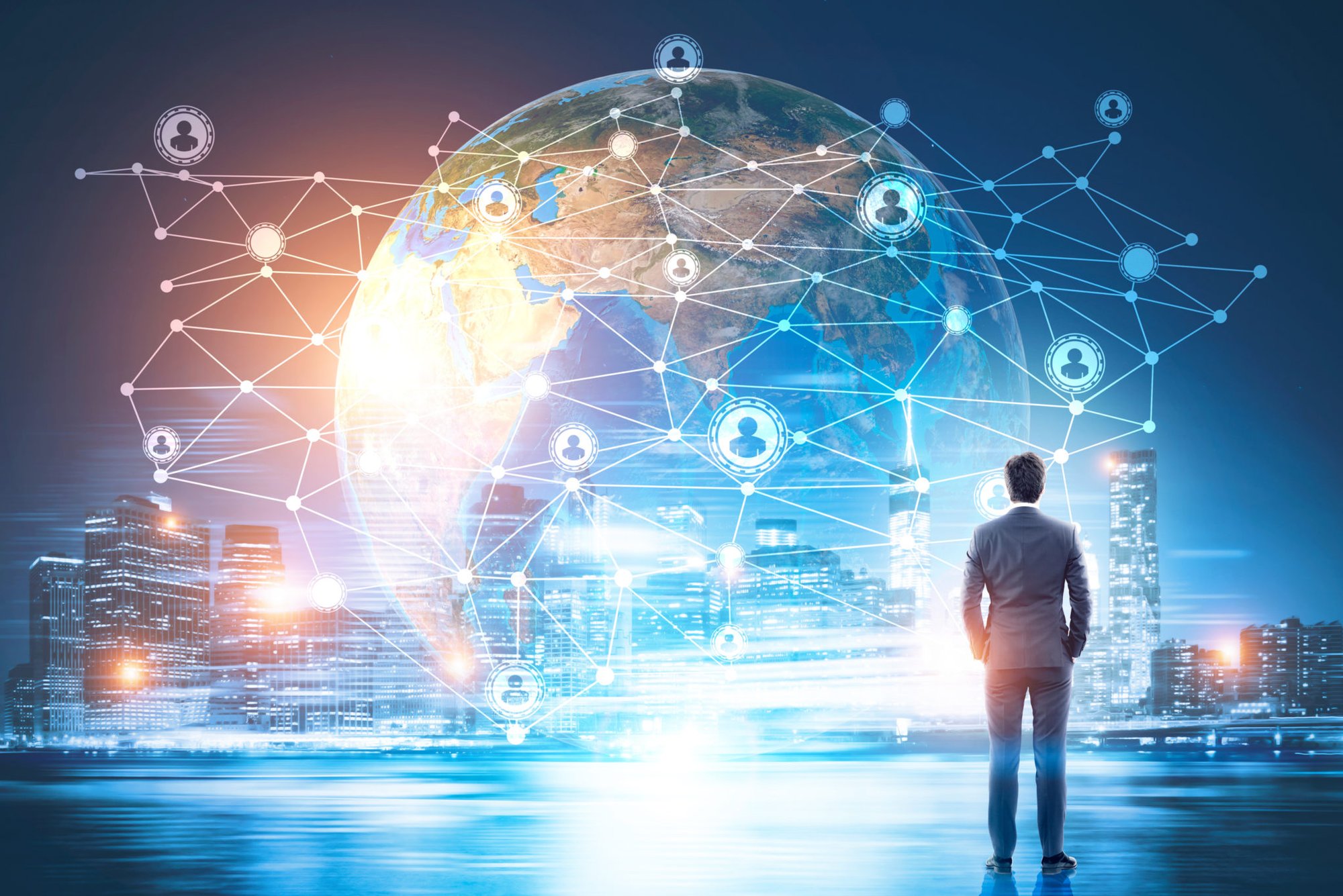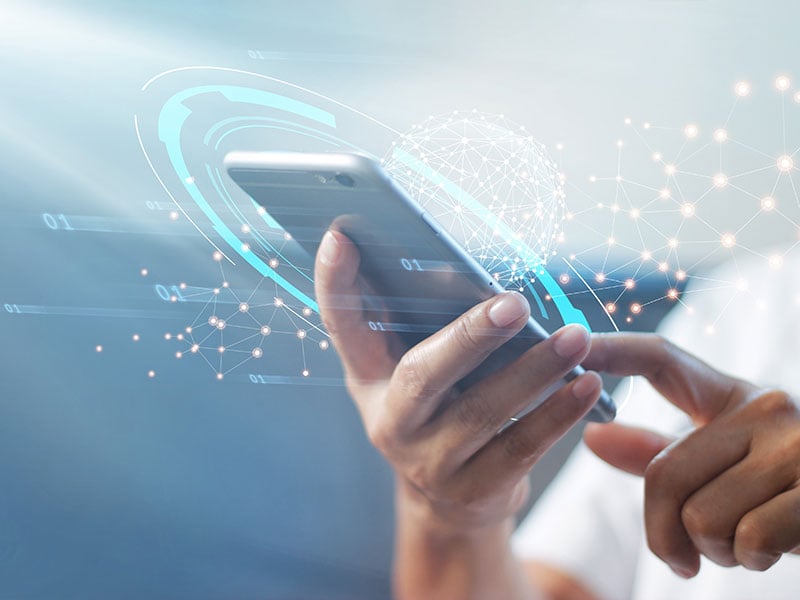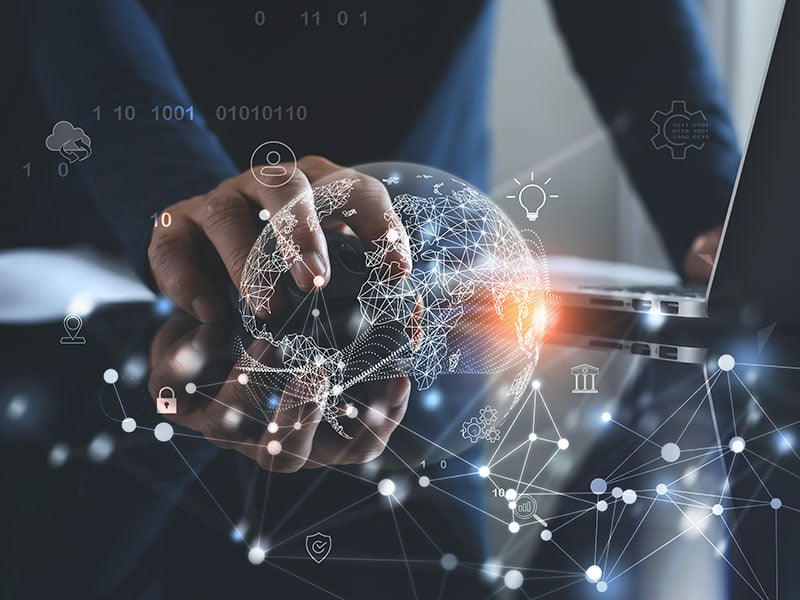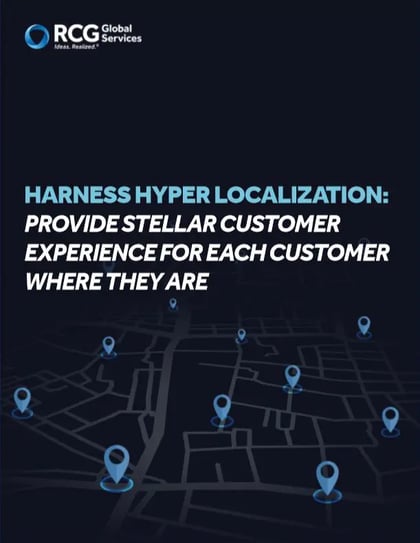Harness Hyper Localization: Provide Stellar Customer Experience
Providing standout customer service is no longer just about having a positive in-store experience. Businesses today are focusing their efforts on offering products that are relevant to their individual customers.
What is Hyper localization?

Whether the business is retail, banking, insurance, healthcare, or hospitality, highly engaging and personalized customer experiences can ultimately increase the business’ revenue and profit. This does not mean every location will have a unique set of products, but they will have a Core Category Assortment (CCA) that is standard across all stores in combination with a local assortment based on established customer profiles and customer preferences for that store. Effective Hyper localization delivers a customer experience that targets an individual customer with product and service offerings based on where they are now.
Hyper localization need not be just limited to retail space, RCG for example, has implemented hyper localization in Educational Services and Universities, in the Financial Services industry, in B2B space and in Healthcare.
Business value for Hyper localization

Examples of core benefits realized by using hyper localization as part of the digital journey include:
Real outcomes from implementing hyper localization
Retail Industry
Over the years the retail industry has transformed significantly. Customer interactions, customer experience, and the path to purchase have been adapting to digital transformation changes. RCG has developed vendor-agnostic frameworks and accelerators to enable organizations with these new capabilities.
Real-time data ingestion and processing
One such retail implementation includes collecting real-time information from pre-installed beacons that send precise customer store location information pairing up with a mobile application. Special offers can be shared via a mobile app with the customer for an item at or near their current location. For example, in a grocery store, a customer in Aisle 22 receives a coupon for a product they normally purchase but just passed on their way to Aisle 23.
Mastering customer Data and building a Profile
Collecting IoT data from beacons and processing that data is just the first step, the data is standardized and matched with enterprise definitions as it moves to the streaming pipelines to serve up real-time operational information to live dashboards.
The data standardization for any customer interaction cannot be possible without a Master Data Management system both for Customer as well as Products and Services. Mastering the data and building a customer profile from all the customer information and interactions, in turn, builds a customer 360 view that enables some of the best customer experiences.
Hyper localization with location analytics
Data containing customer location, product location and store location along with mastered customer profile and product information is the key to hyper localization. However, as your organization matures with Data, customer masters can enable customer 360 views. The next level of natural progression would be to build predictive models that serve up intelligence about a customer or a product based on peta bytes of data collected. For example, data from customer purchase behaviors over a period matched with demographics and social interactions could help create some neat unsupervised machine learning models that can give us great views on customer segmentations.
Educational Services Industry
In the educational services space, looking for student and faculty facilities and services can be transformed with a mobile application that provides precise maps and directions on campus.
Utilizing hyper localization and machine learning on campuses, students and faculty can effortlessly find terminals and conduct transactions at
- Libraries
- Book stores
- Vending machines
Transactions may include traditional payments at on-campus retail facilities as well as access to locked facilities such as dorms and labs.
Financial Service Industry
Financial services organizations with a plethora of Pont of Sale devices and ATMs need to be able to proactively and predictively maintain these devices and provide precise location-based, up-to-date information about the health of the devices. Hyper localization enables health monitoring as well as maintenance prioritization and routing for efficient support.
In this example, RCG has implemented accelerators that bring IoT data from these devices through Kafka Streaming along with precise location information that updates a real-time dashboard. The dashboard summarizes the global health summary for all the devices for a customer but also provides an ability to zoom into a google map to look at a device’s status and health.
Hyper localization in this context greatly helps the business and their managed services customers to take the service levels to new levels and immediately addresses any device downtime, upgrade, or maintenance issues.
Healthcare Industry
With the growing digitization of healthcare services, healthcare providers today are optimizing patient care to specific customer needs at their point of need. Here are a few of the challenges RCG has met for our healthcare customers.
- Reduce healthcare costs when providing IoT telehealth that integrates with local health facilities EMR
- Analyze geographic variation in spending and utilization of healthcare services and provide better regional care.
- Detect households in a patient master data lake based on co-location of the patients and then better service them with healthcare services and any promotions. For example, detect a potential COVID infection if one member of the household is impacted.
- Provide better telehealth services and interventions with IoT telehealth units sending real-time information on device status as well as the change in patient health status.
These services require proper data foundations where patient information flows frictionlessly from different services. Additionally, patient identity needs to be resolved and mastered to arrive at the appropriate patient master record and visualized via a relation analytics friendly patient master graph. A sample of such graph illustrating co-located patient for householding is shown below
Expanding the previous illustration, the following interaction map shows location-based care journey analysis and assists with analytics targeting the lowering of the barrier to care and lowering costs.
Data foundations and processes required to build a great Hyper localization Model

Over the years, we at RCG have identified and developed frameworks and best practices to achieve modern data architectures with solid data foundations.
Build a Cloud-Enabled, Real-time, Event-driven, Hybrid Data Architecture.
With modern data platforms and cloud-based technology, data from any system of interactions or operational system should be able to flow in a frictionless manner.
For example, one such representation shown in the picture below illustrates events (or interactions) that happen in the business processing systems. These events can be captured real-time into a scalable highly=efficient message bus like Kafka. This data can then be standardized and curated to enterprise definitions utilizing stream processing and published to any downstream consumers in an almost real-time fashion. While processing the real-time data this architecture makes sure it is capturing all data into a scalable data lake on the cloud (In this example storage on S3 and compute on Databricks Delta Lake)
Build a trusted data platform
The key to any hyper localization initiative is data that can be trusted and that can provide insights about a product, customer, or service along with the real-time location information.
Building a trusted data platform starts with envisioning a capability map as summarized in the picture below. Understanding every organization is at a different data capability maturity level, RCG has developed road map frameworks that achieve these capabilities in a phase-wise approach while delivering immediate and incremental business value.
Master your Customer
One of the major pain points in delivering hyper localization is not “knowing” your customer. Typically, organizations either organically grow by acquiring customers or grow through mergers and acquisitions. As part of the growing pains, the customer identity gets scattered around the organization. For example, there is a customer record in SalesForce, there will another id in the customer-facing self-service portal, there would be another customer definition in the support systems, and so on. In other words, there will be multiple definitions of the same customer making it very difficult to get a consistent view of the customer across the organization. As a result, customer experience suffers because each system has a unique way of communicating and interfacing with the customer.
RCG developed accelerators that utilize IRaaS (Identity Resolution as Service) to create a consistent and rich customer profile with master customer information, and to generate an identity graph to illustrate a customer 360 view.
Build Responsive Intelligence to provide real-time intelligence about a customer
Last but not least, any hyper localization initiative should have the ability to utilize what we call a “Responsive Intelligence (RI)” platform. In other words, your customer systems should be able to utilize the intelligence that is built from your data platform using machine learning.
A sample view of the RCG framework for RI shown illustrates how machine learning models could be built from vast amounts of data in the data lake. These models could in turn be operationalized to score and serve up intelligence for a product, customer, or service based on a real-time request. For example, a hyper localization app could ask the model to see if a customer has a propensity to buy a product from their current location based on his past purchase history and affinity to certain products or services.
Conclusion
Hyper localization puts customer experience first. Although most of the use cases tend to focus on the retail industry, every industry has applicability for hyper localization including financial services, healthcare, insurance, hospitality, distribution, and educational services. Hyper localization should be built upon a good data foundation and best practices utilizing modern cloud-based technologies.
Download a PDF version of this ebook by filling out this form


